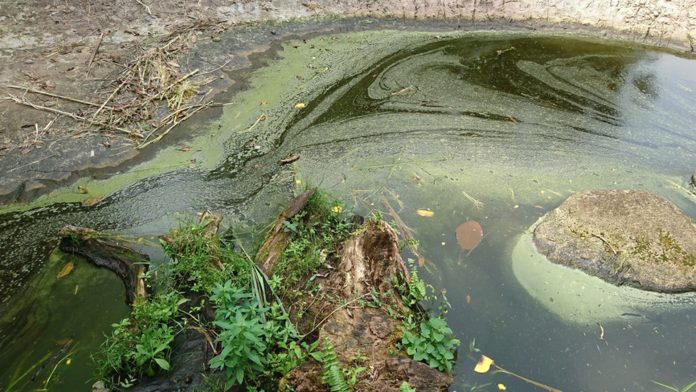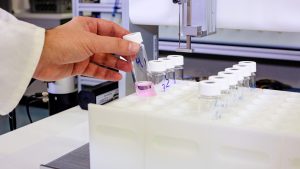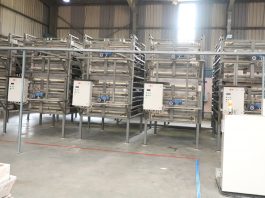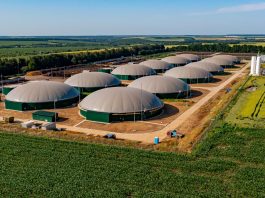Dr Calum Preece, Environmental Market Manager at Elementar UK, outlines the importance of newer methods of nitrogen analysis.
Monitoring and preventing pollution that occurs as a result of human activity is one of the most important priorities for environmental scientists and researchers today. There is a widespread understanding that many of the world’s ecosystems are approaching a tipping point in terms of pollution and that urgent action is needed to address the problem.
However, not all forms of pollution receive the same attention. Whilst carbon, for example, is frequently discussed in the media due to its impact on climate change, there has been much less focus on nitrogen, which can have equally deleterious effects on the environment. In particular, forms of reactive nitrogen such as nitrate can seriously impact water quality, and there will be serious consequences if we fail to bring environmental nitrate under control.
Nitrate pollution is a well-known and serious issue for sectors such as agriculture in particular, and is known to cause problems in terms of water quality, human health, and greenhouse gas emissions. Historically, global efforts to tackle nitrate pollution trends have been held back, in part, by the costs and difficulties associated with routine monitoring.
As such, there is a real need for new testing and analysis methods that can help to shine a light on how nitrate pollution is damaging our environment, in order to aid the development of better solutions in future.
Nitrate pollution: A deepening global problem
Maintaining the balance of the global nitrogen cycle is crucial to the health of the planet’s key ecological processes. This cycle depends on a specific balance of nitrogen inputs and outputs, particularly in terms of environmental nitrate levels.
Although nitrate is an essential nutrient required by all plants and animals, there is considerable evidence that various industrial processes – notably including the overuse of artificial fertilisers to replenish nitrates in the soil, and the excessive burning of fossil fuels – may be disrupting the balance of the nitrogen cycle by increasing nitrate production to dangerous levels.
Data from the UN Environment Programme indicates that around 120 million tonnes of reactive nitrogen are created by human activity each year, and that nearly two-thirds of this nitrogen can be categorised as pollution. There are a number of different ways in which this can manifest:
- Nitrate leaching: Nitrates leach into groundwater supplies from sewer faults and animal waste created by livestock farming, and poison aquifers and drinking wells. If consumed, water with high nitrate content increases the risk of cancer and foetal development problems during pregnancy;
- Nitrate runoff: Excess nitrate from fertilisers runs off into surface waters, which increases nutrient availability to unsustainable levels and causes toxic algal blooms and eutrophication. Ultimately, this can lead to hypoxia and marine dead zones in coastal areas and at sea; and
- Nitrous oxide in the atmosphere: Nitrate pollution leads to an increase in nitrous oxide (N2O) emissions, a potent greenhouse gas with around 300 times more warming potential than CO2. Around 40% of these emissions are estimated to be generated by human activity, including agriculture, the burning of fossil fuels and other industrial processes.
As such, nitrate pollution has been shown to have a potentially devastating impact on air, water, soil, marine and coastal areas, and various reports from recent years offer evidence that these trends may be accelerating:
- Around 200 million pounds of toxic chemicals were dumped into US waterways in 2020, with nitrates accounting for more than 90;
- The European Commission referred Spain to the European Court of Justice for its lack of action on nitrate pollution, following a report from Greenpeace that showed that Spain’s nitrate pollution rates rose by 51.5% from 2016 to 2019;
- Belgium has also been referred to the EU Court of Justice for failing to take sufficient action to protect surface and groundwater against pollution from agricultural sources in the Walloon region; and
- British Geological Survey data shows that nitrate concentrations in UK groundwater are rising at an average of 0.3 mg/l/year, while around 55% of land in England is designated as being at risk from agricultural nitrate pollution.
Clearly, there is a strong need for new solutions to bring these nitrate pollution trends under control. However, because the nitrogen cycle is so complex, a strong foundation of research and analysis is needed to make sure that the sources of nitrate pollution are properly understood, and that the correct interventions can be applied accordingly.
What steps are needed to reduce nitrate pollution?
There are various methods available that have been proven to help mitigate nitrate pollution from various different sources, and many of these are already widely used by their relevant industries:
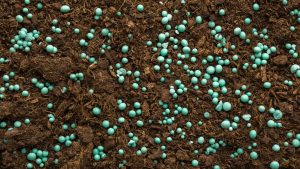
- Using nitrogen fertilisers only during specific time periods, and keeping them away from steep slopes and water courses to prevent leaching and runoff;
- Rotating crops and using soil winter cover and catch crops as a further means of preventing leaching and runoff during wet seasons;
- Limiting the total amount of livestock manure applied to land;
- Adding nitrification inhibitors to fertilisers; and
- Using drip fertigation, in which fertiliser is incorporated into irrigation water via a drip system, to distribute fertiliser more evenly and reduce its overall volume.
However, in order to deploy these interventions effectively, stakeholders need clarity about the exact sources of nitrates, and whether or not they are being generated from anthropogenic sources. This is important because nitrates are naturally occurring compounds, which means that detecting pollution requires more work than simply taking an environmental sample and measuring its nitrate concentrations.
Researchers need to be able to distinguish which compounds have been generated through natural processes and which have been created by human activity. Only by doing so can they correctly identify the sources of environmental nitrate that are doing the most damage in a specific setting, and develop strategies to reduce or eliminate them.
The limitations of current testing methods
As a result of all these factors, a comprehensive approach to testing and analysis will be an essential part of creating an effective strategy to combat nitrate pollution. In the past, this has not always been easy to achieve due to limitations associated with conventional testing methods – but newer innovations are helping to overcome these barriers.
The technique most commonly used to identify different sources of nitrate is stable isotope analysis, which works by measuring the different isotopes of each sample to gain insights into their specific origins. This method has been vital in helping researchers identify the sources, sinks, and cycling of nitrogen throughout terrestrial, atmospheric, and marine ecosystems, and has a wide range of applications.
However, the accessibility of this method has traditionally been limited by difficulties associated with the sample preparation process, which requires dissolved nitrate samples to be converted to N2O first. Typically, this would be done using special denitrifying bacteria, or through a chemical conversion using cadmium and sodium azide.
The bacterial method is the more common of the two approaches, but the process is highly complicated due to the difficulty, costs and time involved in cultivating the bacteria under delicate conditions; as such, no more than several dozen laboratories in the world have ever developed the bacterial method for their routine operation. The cadmium-azide approach has drawbacks of its own, as cadmium and sodium azide are both highly toxic, meaning a specific lab licence and safety/disposal protocols are required to be able to use this method.
How more accessible testing can aid the fight against nitrate pollution
In order to address these longstanding limitations, researchers Dr Mark Altabet and Dr Leonard Wassenaar published a paper in 2019 on an innovative new one-step conversion process that uses titanium (III) chloride to prepare samples for nitrate analysis in a much simpler way.
This method avoids the need to use hazardous reagents or maintain bacterial cultures, with a sample preparation process that takes only a few minutes and produces fully prepared samples in under 24 hours. The new method can be carried out using basic laboratory equipment, utilising safe, easy-to-dispose-of and readily available reagents, making it far easier and much more cost-effective for labs to use.
The technique has already been trialled among a number of smaller laboratories in developing nations that have adopted the method successfully, thanks to its minimal costs and setup requirements. This shows how the new approach creates opportunities for laboratories with fewer resources – which previously had no way to adopt this type of analysis – to get involved in nitrate pollution research.
Thanks to new advances of this kind, it may be possible in future to cost-effectively introduce new national environmental monitoring schemes for nitrates, as part of countries’ water quality observation networks. This would allow governments to regularly review sources of nitrate in streams, watersheds and groundwater systems and enable them to address potential sources of nitrate contamination more proactively.
Ultimately, making nitrate analysis more accessible will help to improve global understanding of nitrogen pollution trends and allow effective long-term solutions to be developed. Currently, this form of pollution poses a significant danger to the global ecosystem, but as more analytical tools and methods are developed, we can move a step closer to the environmental breakthroughs the world so urgently needs.

Dr Calum Preece
Environmental Market Manager
Elementar UK

